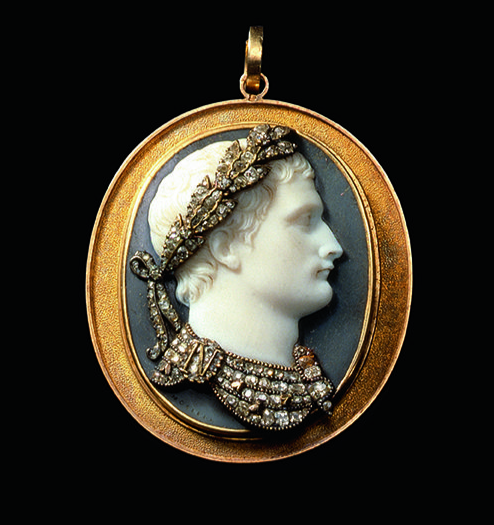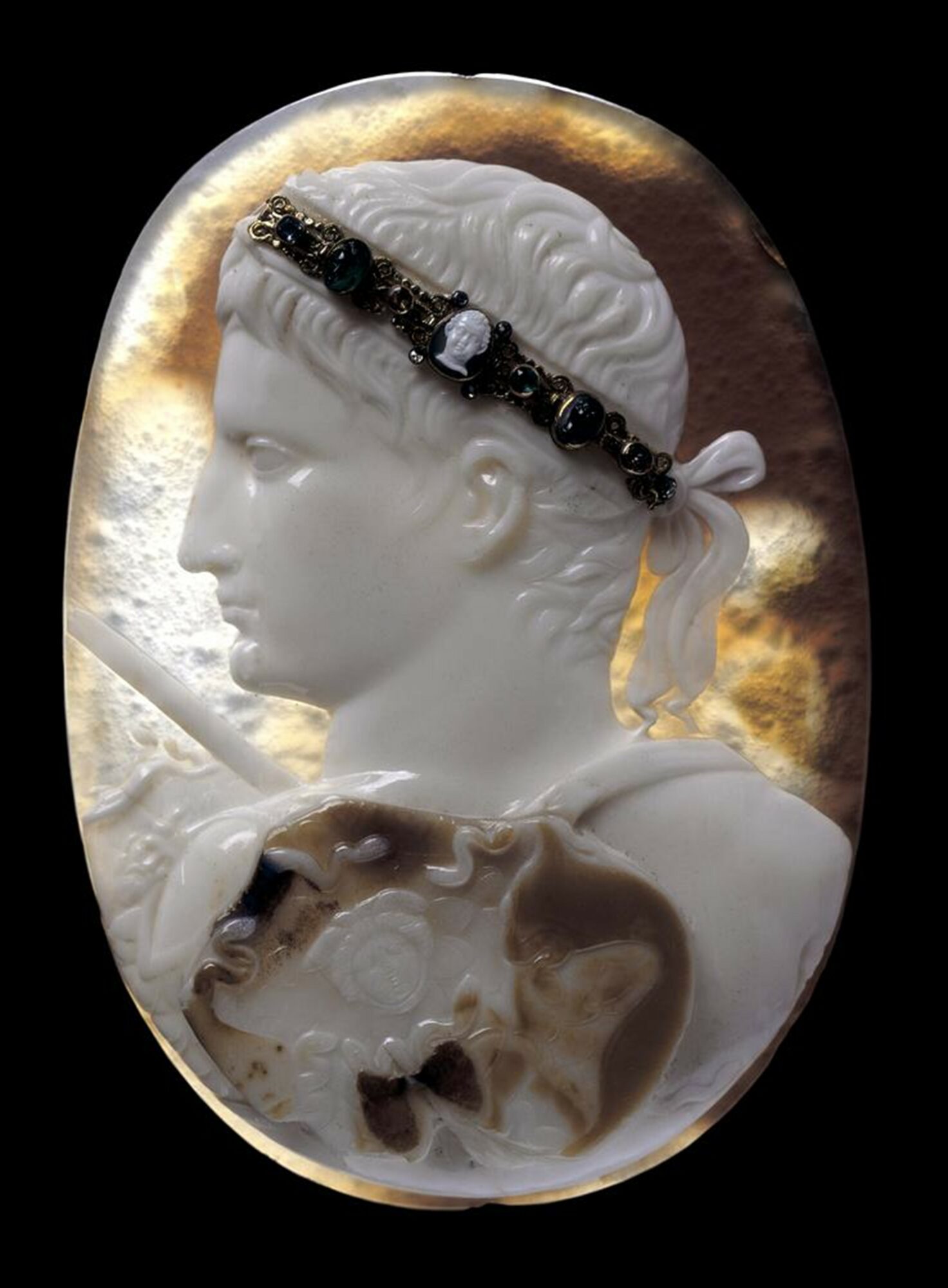This jewel expresses the essence of Empire and temporal power in that Napoleon is represented as a Roman emperor. In addition, a carved lapis plaque set at the back is applied with a chased gold eagle holding a thunderbolt in its claws in a reference to an even higher level of authority: Jupiter, the king of Olympian gods.
A quintessential Imperial jewel
A magnificent carved onyx portrait cameo habillé of Napoleon by Nicola Morelli, circa 1805, with diamond set embellishments and gold pendant mount of contemporary French manufacture.


The turn of the 19th century saw the pinnacle of portrait gem engraving, mainly as a result of the prodigious talent of Italian artist engravers such as Morelli and Girometti whose work was sought after by the European élite. Napoleon in particular was fascinated by the glyptic art and opened a school of gem engraving in Paris, modelled on the one in Rome.

The bulk of portrait engravings were of course commissioned for purposes of State throughout Europe and this extraordinarily sensitive and fine carving is a good example. Morelli was clearly influenced by the Roman gem engraver who carved the portrait of Augustus – once in the Strozzi Collection in Florence, and now at British Museum in London – with a similar sensitivity and attention to detail. In this case the jewelled head ornament is a Medieval substitution for the original wreath of laurel leaves (see the image above).
